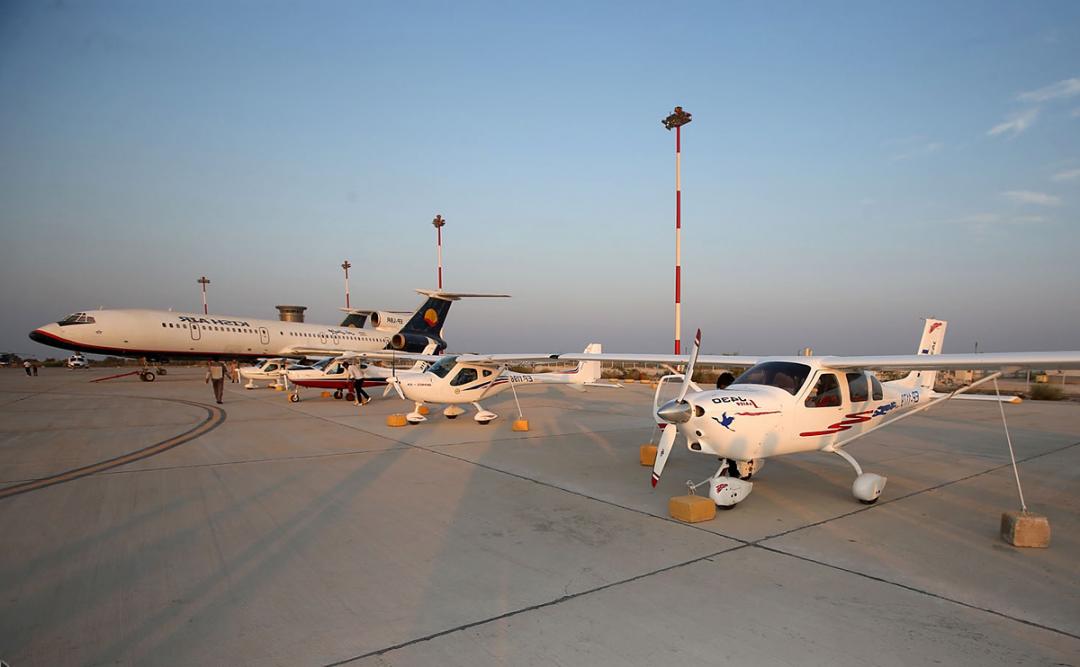Despite western sanctions, Iran’s civil aviation industry has grown relatively in recent years, industry officials often claim.
Regardless of all the dire troubles that it has encountered in the past 35 years, the industry has made some progress. Officials say the industry has even made progress in compliance with international standards.
The Rouhani administration has taken a supportive stance toward the industry so far. It has established a committee of aviation industries in a bid to create jobs in line with increasing exports in the industry. The committee has been founded with the aim of bridging the gap between the private sector and state-run entities and upgrading the industry’s know-how level.
One of the administration’s major targets is to develop the general aviation industry and reach an optimum level in exporting domestic aviation products. The industry is set to achieve a target export of $100 million in value by the end of this year (ending March 20, 2015), according to Vice-President for Science and Technology Affairs Sorena Sattari, as reported by ISNA last Tuesday. “At present, our country hungers for obtaining, commercializing and exporting technology to other countries,” he said.
Another policy of the administration is to attract more than 30 trillion rials (roughly $923 million based on the market exchange rate) of finance from both domestic and foreign investors to upgrade the industry’s aging air fleet and develop new projects, ISNA reported citing Mohammad Ilkhani, the managing director of State Airports Company.
For instance, the private sector has been called to support the expansion of Tehran Imam Khomeini International Airport (IKA), which is set to become “the third largest airport in the globe,” Ilkhani said.
Surprisingly, as recently announced, the private sector has also been allowed to import aircraft. Alireza Jahangirian, the head of Iran Civil Aviation Organization told Mehr news agency earlier this week that the private sector can import aircraft provided that it observes safety regulations and obtains legal permits.
Kish Air Show
The domestic aviation industry displayed its most recent aeronautical achievements and capabilities in the fields of passenger and cargo transportation in the 7th edition of Kish International Air Show (also known as International Exhibition of Iran Aviation Industries) which ended on Friday after 190 memoranda of understanding were signed between domestic and foreign companies.
A large number of domestic companies active in the aviation, aerospace, airlines and affiliated industries attended the event. In addition, companies from Sweden, Germany, South Korea, Russia, France, Italy, South Africa and Malaysia displayed their latest aviation and aeronautical achievements.
The four-day show was an opportunity for Iran to showcase the latest accomplishments of its knowledge-based aviation companies, introduce its domestic aerospace professionals to the globe, and facilitate their future interaction with their international counterparts to develop new strategies for the growth of their businesses.
The country wishes into convert the southern Kish Island into an aerospace hub in the near future and lure prominent foreign companies to exchange expertise with them.
Overflights
Given the recent surge in the number of overflights, Iran’s aviation industry has taken the opportunity as a source of income. Tensions in Iraq and Ukraine in the past couple of years have forced international flights to fly over Iran which has a safe airspace.
As officially announced, Iran can charge up to $2,000 per overflight depending on the weight of the plane. The Islamic Republic earned $120 million from international aircraft overflying its airspace in the past fiscal year, which ended on March 21, 2014. The figure is forecast to double in the current year.
For the time being, Iran accepts over 1,000 transit flights form 33 foreign airlines, registering a new record in the country’s history.
“In the first six months of the current year (March 21- September 23), the Civil Aviation Organization issued about 45,000 permits for overflights, which shows a 10 percent increase compared to the same period last year,” Mohammad Khodakarami, deputy director of the organization told Fars news agency on November 1.
Currently, the United Arab Emirates (UAE), with more than 170 flights, ranks first among world countries using the airspace. It is also notable that a total of 15 American flights overfly the Iranian airspace every day, the agency quoted Ilkhani as saying last Tuesday.
The demand for overflying Iran has been on the rise since July, when Iran declared readiness to allow international flights from Northern Europe to the Eastern parts of Asia to pass through its airspace after Ukraine closed its airspace following the shooting down of a Malaysian airliner in its sky. The recent developments in Iraq have also been effective in increasing transit flights over Iran’s air space.
Sanctions Relief
The US sanctions – some of which have been imposed since the 1979 Islamic Revolution – are in violation of Article 44 of the Chicago Convention, to which the US is a signatory. In the past years the sanctions have imposed restrictions on the purchase of airplanes and their parts and have imperiled the safety of civil aviation in Iran.
Regarding the impact of sanctions, some officials believe that external pressure has had no negative effect on the aviation industry and, quite the contrary, the country has managed to improve domestic capability of maintenance and repair of wide-body planes, while others admit that Iran needs to import major airplane parts from western countries.
Under President Hassan Rouhani, Iran managed to reach a landmark interim agreement with the six world powers known as the P5+1 over a nuclear dispute. The deal which was signed in November 2013 in Geneva eased the sanctions in exchange for Iran limiting some parts of its nuclear energy program.
If a “comprehensive” deal is achieved by the November 24 deadline, Iran will have a chance to renew its old air fleet and even import the technology it needs to further develop its domestic aviation industry.


